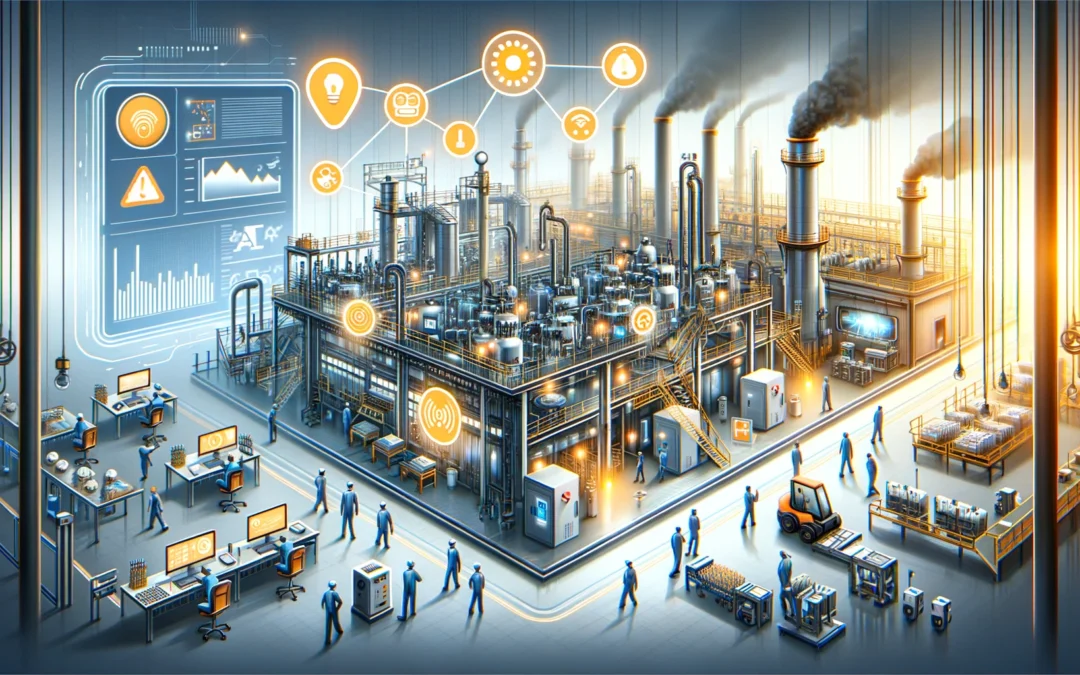In the rapidly evolving landscape of industrial operations, safety remains a paramount concern. With the advent of Artificial Intelligence (AI), the potential to revolutionize safety protocols and accident detection in industrial environments has dramatically increased. This article explores how AI technologies are being deployed to enhance safety measures, reduce accidents, and save lives in the workplace.
The Rise of AI in Industrial Safety
AI, with its ability to process and analyze vast amounts of data at unprecedented speeds, offers a game-changing approach to detecting potential safety hazards and preventing accidents before they occur. By leveraging machine learning algorithms, computer vision, and sensor technology, AI systems can identify patterns, anomalies, and risks that are imperceptible to human supervisors.
Real-Time Monitoring and Predictive Analytics
One of the most significant contributions of AI to industrial safety is its capacity for real-time monitoring and predictive analytics. AI systems equipped with sensors and cameras continuously scan the work environment, monitoring equipment status, detecting irregularities, and tracking worker movements. This real-time surveillance allows for the immediate identification of potential hazards, such as equipment malfunctions, unsafe worker behaviors, or hazardous conditions, enabling swift intervention.
Predictive analytics takes safety measures a step further by analyzing historical data to predict potential accidents before they happen. By understanding past incidents and near-misses, AI can identify risk patterns and forecast future events with remarkable accuracy, allowing for preemptive action to avoid repeat scenarios.
Computer Vision for Accident Detection
Computer vision, a field of AI that enables machines to interpret and make decisions based on visual data, plays a crucial role in accident detection. Through advanced image recognition techniques, AI systems can detect spills, smoke, fire, or unauthorized personnel in restricted areas. These systems can also monitor compliance with safety gear usage and ensure that safety protocols are followed, alerting managers to potential breaches.
Enhancing Worker Training and Safety Awareness
AI also contributes to improving worker safety through enhanced training programs. Virtual reality (VR) and augmented reality (AR), powered by AI, provide immersive training experiences that simulate real-life scenarios and hazards, allowing workers to practice their responses in a safe environment. These technologies make safety training more engaging and effective, preparing employees to handle dangerous situations with greater awareness and precision.
Challenges and Future Directions
While AI holds tremendous promise for enhancing industrial safety, its implementation is not without challenges. Concerns about privacy, data security, and the need for significant investments in technology and training are among the hurdles that industries face. Furthermore, the success of AI in accident detection relies on the continuous collection and analysis of accurate data, requiring robust infrastructure and skilled personnel.
Looking forward, the integration of AI in industrial safety is set to become more widespread, with advancements in technology making these systems more accessible and effective. Collaboration between AI developers, safety professionals, and industry stakeholders will be crucial in designing systems that meet the specific needs of various industrial environments.
Conclusion
AI’s role in accident detection in industrial environments signifies a new era in workplace safety. By harnessing the power of AI for real-time monitoring, predictive analytics, and enhanced training, industries can significantly reduce the risk of accidents and create safer working conditions. As we continue to refine and expand these technologies, the potential for AI to protect workers and save lives is boundless, marking a transformative shift in how we approach industrial safety.

